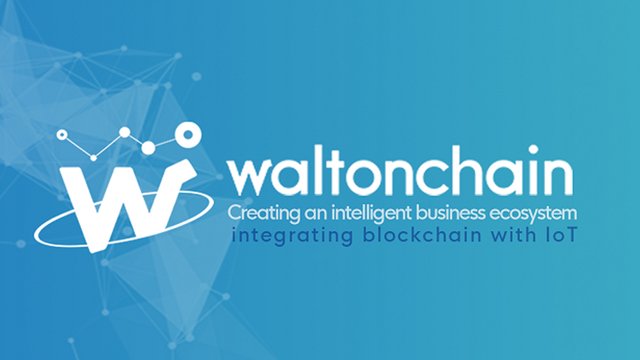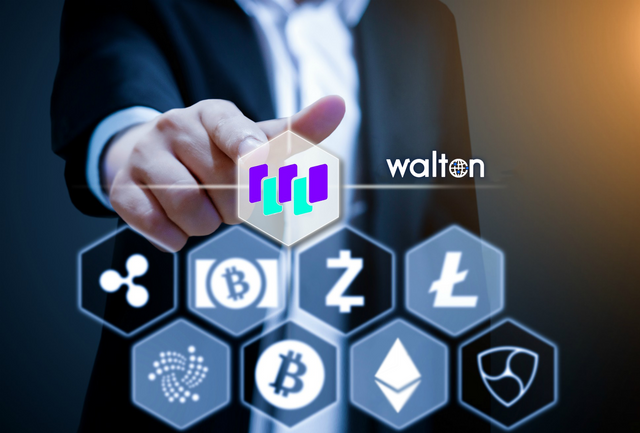Waltonchain: Putting Commercial Data on the Blockchain

Apparently, the advent of internet technology has eliminated space and time limitations in effective communication for personal, industrial and commercial purpose. Progressively, the internet has gone beyond just interaction module, it has been able to integrate business module to it's applications. Companies, organisations, industries and individuals are able to utilize the internet's advantages in their operations, hence the concept of Internet of Things (IoT), was coined.
The year 2009 introduced Blockchain technology as an open ledger with no central authority controlling its data operations. Blockchain has over the few years proven to be efficient resulting in rapid adoption of the novel technology in several fields.
The current problem of the commercial industry has data collections and data privacy in the supply chain process. Now, in saving the situation, Waltonchain looked into possible integration of blockchain and IoT to change the existing business ecosystem, that is, integrating big data to IoT to restructure commercial data business paradigm. Hence, the word, Value Internet of Things, (VIoT).
The proposed set-up of VIoT is of two segments, hardware and the software. The hardware composes of RFID technology which includes RFID tag chips and the RFID reader chips. Tag chip is the interface for assets connection while the reader chip is the bridge which can also be used as the node on the chain. The software segment is made up of the Waltonchain which comprises of waltonchain software, waltonchain protocols and waltoncoin. Waltoncoin is the currency of the platform. WTC had been listed on Huobipro, since July 12, it can be traded in these pairs: WTC/BTC, WTC/ETH. (https://www.huobi.br.com/en-us/topic/invited/?invite_code=da523)
What is RFID?
Acronym for Radio Frequency Identification. It's a carrier of product code, an automatic identification technology, RFIDs are electronic communication technologies attached to tangible entities which makes the entities traceable, identifiable and readable. In other words, RFIDs are electronically stored data, they are embedded trackers in products or entities According to Waltonchain Whitepaper(https://waltonchain.org/templets/default/doc/Waltonchain-whitepaper_EN_20180525.pdf), RFIDs usage has a long history beginning in the UK during World war II for communication, enemy and fellow aircraft identification etc. Continuously, it experienced upgrading, businesses like huge supermarkets, services etc began to adopt it. Waltonchain Whitepaper pointed that currently, the general focus is on the UHF RFID that operates within a frequency range of 860 to 960 MHZ with added advantage of fast communication speed, reduced radio noise, multi-target recognition, long effective range etc.
.jpg)
WALTONCHAIN
What is Waltonchain?
Walton is said to mean thus:
W- wisdom
A- Alters
L- label
T- Trade
O- organisation
N- network
The wisdom waltonchain proposed to solve commercial data is that using RFID as the base of blockchain technology to IoT and smart system will connect entity tags be it item tags, body tags etc of the real world with virtual network.
Waltonchain ecosystem structure includes a Parent chain also called the waltonchain and the child chain which can also be seen as subchains. The parent chain is used to open a full supply chain system of the industry from start to finish. It's the Genesis block or chain on the network. There can be a lot of child chains. A product quality or it's demand level can be used to generate one. The child chain is developed through smart contracts and it's allowed to use any consensus mechanism that suits the business scenario. Waltonchain breeds into four layers, Bottom layer, core layer, middle layer and application layer. (https://waltonchain.org/)
For instance, A who owns a big electronic store which has branches, uses Waltonchain. A parent chain is produced that keeps data of manufacturing, logistics, distribution, sales etc. The child chain is created to keep the data of product demand level, efficiency, bad products, marketplace, sales level etc. This will help A understand customers, help inform A’s distributor the needed product. However, such data is accessible only by A’s electronics store.
If Mr A owns a gadget store with several branches. With the integration of Blockchain technology into IoT, RFID is embedded in each item and entity of Mr A’s business for tracking purposes. A parent chain is them produced which has the full data of his business ranging from logistics, manufacturing, distribution, resources and staff. As the business moves, subsequent chain called the child chain is created, the child chain contains periodical issues associated with each gadget. Issues like current market demand of a particular gadget, performance of such gadget. For instance, infinix prefered to techno products or vice versa, depending on the customer’s needs. The RFID receives this information and sends them to the blockchain, these information are gathered and stored as data on the blockchain network, which are then protected by the cryptography of the network. This information is only accessible by Mr A and gadget’s manufacturers for review purpose and customer satisfaction improvement. That is, it's the connection of all identity of the real world to the virtual network over the internet to enhance secured data exchange and storage.
With RFID,
- Only signature verification is needed, no need to store data by each tag, hence, data is made private
- Tag automatically generates public and private keys ensuring security
- Information overload is reduced
- Blockchain decentralization module is implemented.
Waltoncoin offers
- Innovation mode: earlier discussed integration of RFID to IoT and blockchain
- Marketspace: a huge market level potential for industry.
- High frequency application: application scenario will be wide and much
- Ecological network: ensure a trackable and secured new supply chain covering storage, circulation, transaction, payment medium etc.

Considering the project stages laid out, RFID technology clothing which has been tested on some pilot projects, developing beacon chips for B2C retail industry, smart packaging and customization with smart contracts and assets control, tracking and management and not to talk of it's self acclaimed “the next big coin (WTC) aside BTC and ETH”. The supply chain industry data is important to economic wealth generation and sharing. Yes, WTC is worth investing. You should study the Whitepaper. (https://waltonchain.org/templets/default/doc/Waltonchain-whitepaper_EN_20180525.pdf)